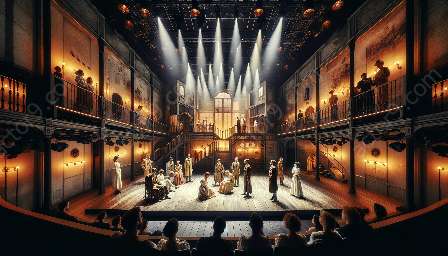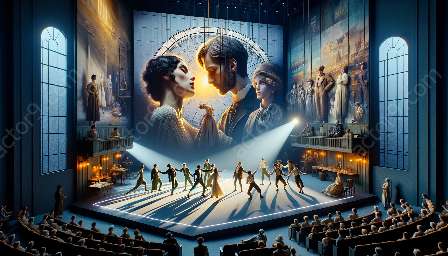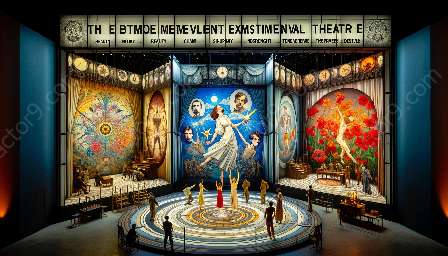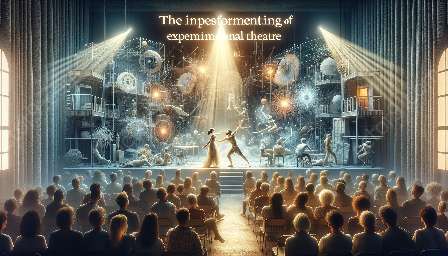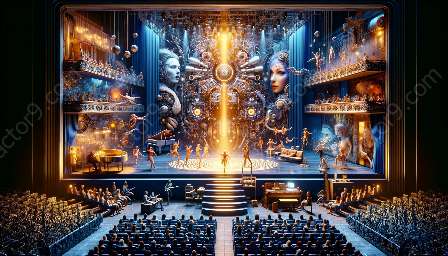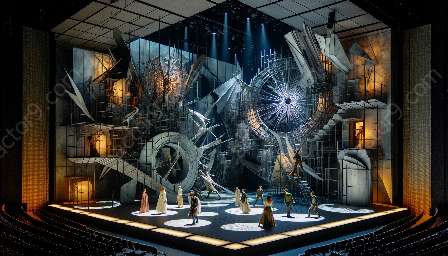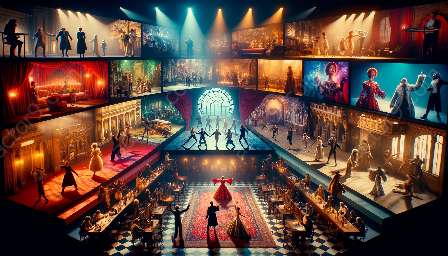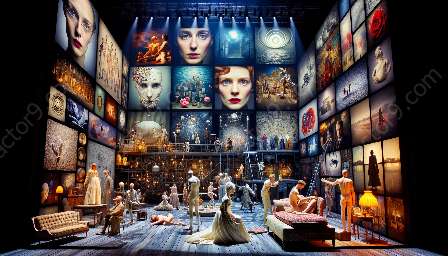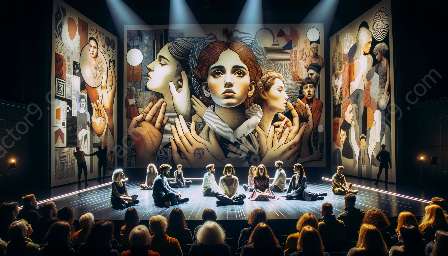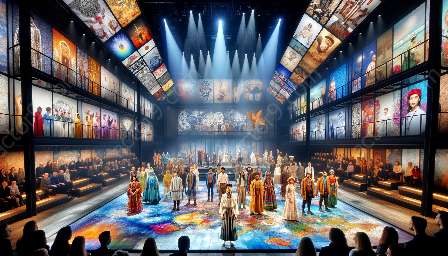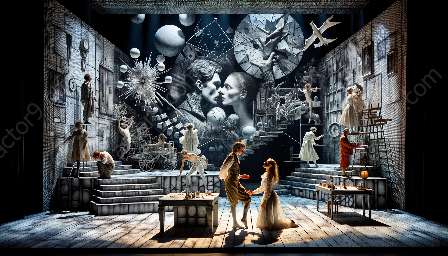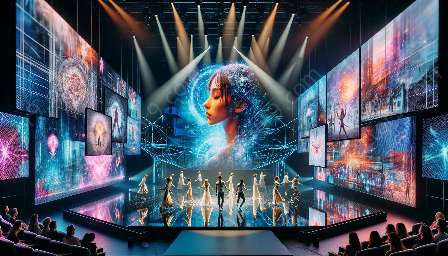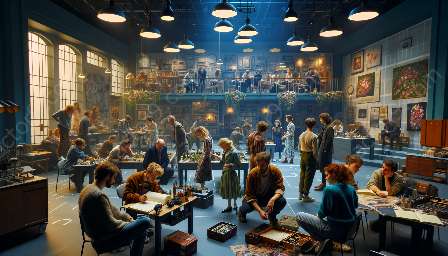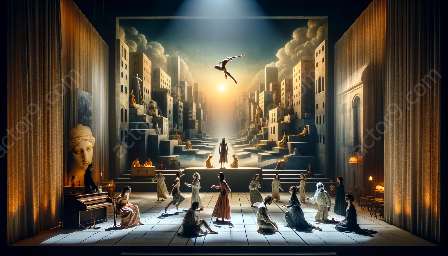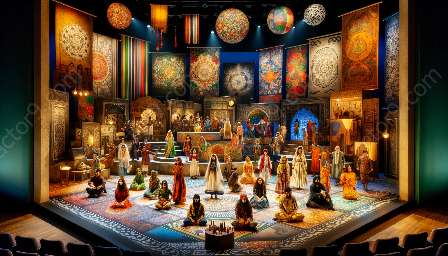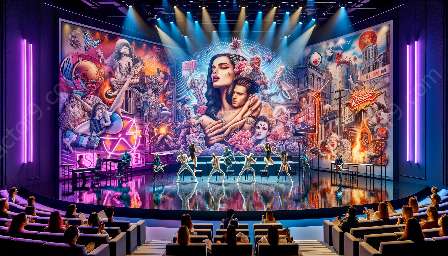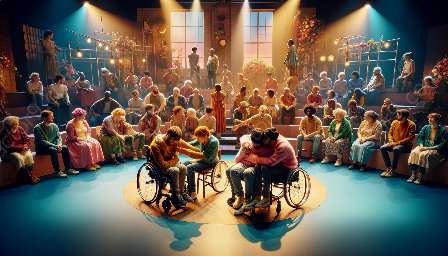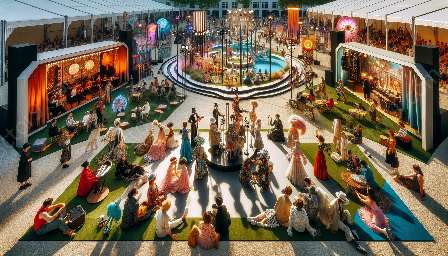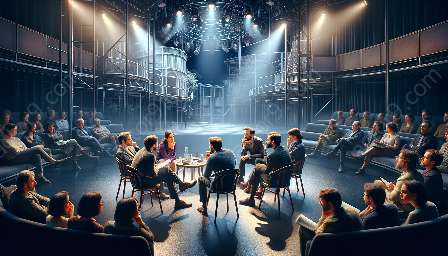Experimental theatre represents a dynamic and boundary-pushing form of artistic expression within the performing arts. At its core, the essence of experimental theatre lies in pushing the boundaries of traditional performance by embracing a spirit of innovation, risk-taking, and thinking outside the box. The collaborative approaches within experimental theatre play a pivotal role in shaping the creative process and the final production that unfolds on stage. In this topic cluster, we will delve into the fascinating world of collaborative approaches within experimental theatre and explore how they intersect with the broader realm of performing arts, including acting and theater.
Understanding Experimental Theatre
To truly appreciate the collaborative approaches in experimental theatre, it's essential to understand the nature and characteristics of experimental theatre itself. Experimental theatre challenges conventional norms and expectations, often blurring the lines between different art forms and encouraging a multidisciplinary approach to performance. It thrives on innovation, unconventional storytelling, and a willingness to push the boundaries of what is considered 'theatrical.'
Key features of experimental theatre may include non-linear narratives, audience interaction, incorporation of multimedia elements, and an emphasis on physicality and visual storytelling. This form of theatre often invites the audience to experience the performance in a more immersive and participatory manner, creating a dynamic exchange between the performers and their viewers.
The Role of Collaboration in Experimental Theatre
Collaboration lies at the heart of experimental theatre, serving as a fundamental ingredient in the creative process and the production itself. The collaborative nature of experimental theatre extends beyond the traditional division of roles between actors, directors, and designers. It embodies a collective effort that integrates diverse perspectives and expertise, blurring the lines between various artistic disciplines to create a cohesive and innovative performance.
Actors, directors, playwrights, designers, and technical crew members often engage in a collaborative dialogue throughout the entire production process, from conceptualization to performance. This collaborative approach encourages experimentation, risk-taking, and the exploration of new ideas and techniques, leading to the creation of performances that defy conventions and redefine the boundaries of artistic expression.
Intersecting with Performing Arts: Acting and Theater
As we explore collaborative approaches in experimental theatre, it's crucial to recognize the interconnectedness with the broader realm of performing arts, particularly acting and theater. The collaborative spirit in experimental theatre permeates into the world of acting and theater, offering a unique platform for performers to engage in innovative and immersive experiences.
Actors in experimental theatre often find themselves involved in the co-creation of their characters and the overall performance, collaborating closely with directors and fellow performers to bring a sense of authenticity and experimentation to their portrayals. This collaborative process empowers actors to push their creative boundaries, embrace unconventional techniques, and contribute their unique insights to the development of the production.
Similarly, the world of theater benefits from the influence of collaborative approaches in experimental theatre, inviting traditional stage productions to embrace a more dynamic and experimental ethos. The cross-pollination of ideas and techniques between experimental theatre and traditional theater enriches the performing arts landscape, fostering a climate of innovation, inclusivity, and artistic risk-taking.
Innovation Through Diversity and Inclusivity
One of the most compelling aspects of collaborative approaches in experimental theatre is the celebration of diversity and inclusivity. The collaborative nature of experimental theatre opens doors for artists from diverse backgrounds, disciplines, and perspectives to come together and co-create meaningful, boundary-pushing performances.
By embracing a spirit of inclusivity, experimental theatre encourages the integration of different artistic traditions, cultural influences, and varied life experiences into the creative process. This amalgamation of diverse voices and perspectives enriches the artistic tapestry of experimental theatre, leading to performances that resonate with authenticity, complexity, and depth.
The Impact of Collaborative Approaches
The impact of collaborative approaches in experimental theatre reverberates throughout the artistic landscape, influencing not only the realm of performing arts but also broader societal conversations. By fostering collaboration, experimentation, and inclusivity, experimental theatre serves as a catalyst for change, challenging established norms and inspiring audiences to engage with performance in new and thought-provoking ways.
Collaborative approaches in experimental theatre offer a powerful platform for artists to voice their narratives, challenge assumptions, and provoke meaningful discourse. This collaborative ethos transcends the boundaries of the stage, creating ripples that extend into the realms of social and cultural dialogue, sparking conversations on diversity, innovation, and the transformative power of collaborative art.
Conclusion
Collaborative approaches in experimental theatre represent a dynamic convergence of artistic innovation, inclusivity, and boundary-pushing creativity. Within the realm of performing arts, the intersection of collaborative approaches in experimental theatre with acting and traditional theater opens doors for a rich tapestry of artistic expression, challenging the status quo and inviting audiences to engage with performance in new and immersive ways. The collaborative spirit of experimental theatre serves as a catalyst for change, fostering a vibrant artistic landscape that celebrates diversity, experimentation, and the transformative power of collective creativity.

